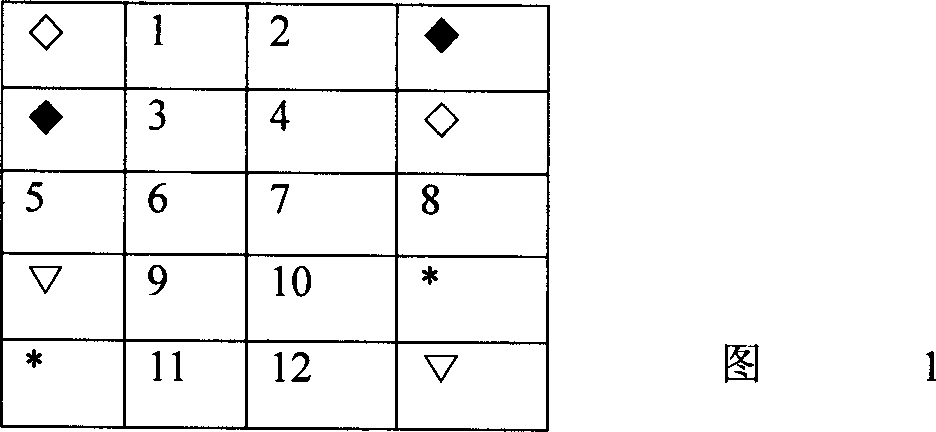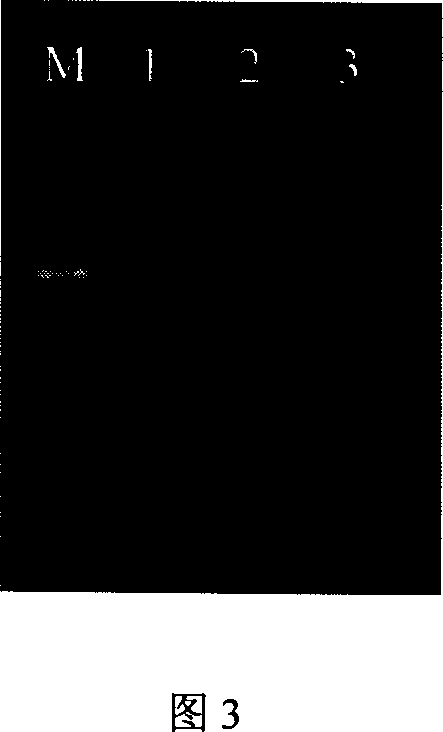Gene chip for detecting six kinds of diarrhea pathogens and its prepn process and kit
A gene chip and pathogenic bacteria technology, applied in the field of bioengineering, can solve the problems of time-consuming and laborious, single detection method, etc., and achieve the effect of easy use
- Summary
- Abstract
- Description
- Claims
- Application Information
AI Technical Summary
Problems solved by technology
Method used
Image
Examples
Embodiment 1
[0040] Design and Synthesis of Probes for Six Diarrhea Pathogenic Bacteria
[0041] 1.1 Design of probes for six diarrhea pathogenic bacteria
[0042] The gene probes of six diarrhea pathogenic bacteria were obtained through literature search and the comparison of the National Center for Biological Information (NCBI). First of all, we need to clarify what kind of probes are needed on the chip to detect pathogenic bacteria in the sample. According to the literature search, the specific gene sequences of various pathogenic bacteria can be obtained, compared in the NCBI database, according to Shigella, hemorrhagic E. coli, invasive E. The gene sequence was compared with the sequence in the NCBI database, and the sequence with high intra-species conservation and high inter-species specificity was selected and input into the software PrimoMultiplex 3.4 Multiplex PCR Primer Design, the parameters were set, and the program was run, (5'PRIMER 0-2003 'PRIMER-200-0 TM: 57℃TM Formula N...
Embodiment 2
[0198] chip preparation
[0199] After obtaining the purified synthetic probe fragments, configure the probe solution and prepare for chip application.
[0200] Chip fabrication:
[0201] 1. Cutting film: Select a suitable nitrocellulose film or nylon film, and cut it into square chips accurately in a film cutting machine. The size is 1.5cm×1.5cm.
[0202] 2. Film: fix the chip in the chip square dish with glue, make it close to the bottom of the dish, place it, wait for the glue to solidify, use a 15.0×15.0mm square mold to lightly press the chip, make it close to the bottom of the chip square dish, place it After 2 minutes, the gel is solidified, and the chip is evenly pasted on the bottom of the chip square dish, and a directional mark or number is made on the frame of the chip square dish.
[0203] 3. Membrane spotting: Arrange the distribution of probes reasonably, and set up positive and negative control points. Then add the prepared probe solution one by one into th...
Embodiment 3
[0225] sample processing
[0226] 1) Sample collection
[0227] After the patient defecates, pick a few feces with pus, blood and mucus (flocculent for liquid feces), and put them in a 1.5ml sterile centrifuge tube. For those who are difficult to obtain feces or infants, anal swabs can be used to collect them. Moisten the front end of the swab with sterile glycerin water and insert it into the anus about 4-5cm (about 2-3cm for young children), gently rotate and wipe the surface mucus, then withdraw it and place it in a 1.5ml sterile centrifuge tube for inspection.
[0228] 2) Sample processing;
[0229] 1. Take an appropriate amount of feces in a 1.5ml sterile centrifuge tube, add an appropriate amount of sterilized saline to 1ml, shake well and centrifuge at 600g for 1-3min. Take the supernatant.
[0230] 2. Centrifuge the supernatant at 12000g for 3-5min, discard the supernatant, add 200-500μl normal saline, and centrifuge at 12000g for 5-10min. Take the supernatant.
...
PUM
 Login to View More
Login to View More Abstract
Description
Claims
Application Information
 Login to View More
Login to View More - R&D
- Intellectual Property
- Life Sciences
- Materials
- Tech Scout
- Unparalleled Data Quality
- Higher Quality Content
- 60% Fewer Hallucinations
Browse by: Latest US Patents, China's latest patents, Technical Efficacy Thesaurus, Application Domain, Technology Topic, Popular Technical Reports.
© 2025 PatSnap. All rights reserved.Legal|Privacy policy|Modern Slavery Act Transparency Statement|Sitemap|About US| Contact US: help@patsnap.com



